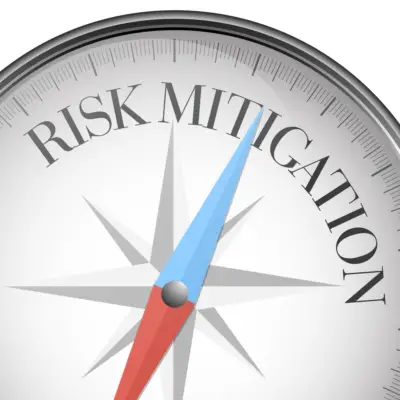A data breach risk assessment template is valuable for organizations to evaluate and mitigate potential vulnerabilities within their systems and processes. This template typically includes various sections, such as identifying potential threats, assessing the likelihood and impact of each threat, evaluating existing security measures, and developing a plan to address any identified risks.
Utilizing this template, organizations can systematically assess their data breach risks, prioritize mitigation efforts, and implement necessary controls to reduce the likelihood and impact of a breach.
This proactive approach helps organizations strengthen their security posture and protect sensitive information from unauthorized access or disclosure.
Additionally, regularly conducting data breach risk assessments allows organizations to stay ahead of emerging threats and adapt their security measures accordingly, ensuring ongoing protection against potential breaches.

Key Takeaways:
- Data breach risk assessment is crucial: Understanding the importance of assessing data breach risks is essential for organizations to identify vulnerabilities and protect sensitive information.
- Key elements of a data breach risk assessment template: A comprehensive template should include an inventory of data assets, threat identification and analysis, vulnerability assessment, impact analysis, and risk scoring.
- Conducting a data breach risk assessment: Steps include identifying assets, assessing threats, evaluating vulnerabilities, determining impacts, calculating risks, and prioritizing mitigation efforts.
- Developing risk mitigation strategies: Once risks are identified, organizations should plan to minimize vulnerabilities, strengthen security measures, and establish incident response procedures to respond to and recover from data breaches effectively.
Introduction: Understanding the importance of data breach risk assessment
Understanding the Significance of Data Breach Risk Assessment
Data breach risk assessment holds tremendous importance in ensuring the security and integrity of an organization’s data. It involves analyzing and evaluating potential vulnerabilities that may lead to breaches, enabling proactive measures to be implemented.
Comprehending the gravity of data breach risk assessment, businesses can safeguard their sensitive information, protect their reputation, and comply with legal and regulatory requirements.
Continuing the Focus on Data Breach Risk Assessment
Maintaining a strong emphasis on data breach risk assessment is vital for organizations to identify potential security weaknesses and mitigate the risks associated with data breaches. Conducting regular assessments, businesses can stay ahead of evolving threats and strengthen their overall security posture.
Therefore, organizations can proactively protect their valuable data assets from unauthorized access and potential breaches by fully understanding the importance of data breach risk assessment.
Revealing Unique Insights into Data Breach Risk Assessment
While data breach risk assessment is primarily undertaken to identify vulnerabilities and prevent security incidents, it also offers unique insights into the effectiveness of existing security measures. Examining the findings of risk assessments, organizations can identify potential gaps in their security infrastructure and take remedial actions to enhance their overall data protection capabilities.
This proactive approach ensures that organizations are better prepared to combat emerging threats and maintain their data’s confidentiality, integrity, and availability.
Practical Suggestions to Strengthen Data Breach Risk Assessment
Organizations should consider implementing several key suggestions to improve data breach risk assessment further. These include regular training sessions to educate employees about best practices in data security, conducting periodic penetration testing to identify potential vulnerabilities, and establishing incident response plans to address breaches effectively.
Adopting these measures, businesses can proactively address data breach risks, enhance their incident response capabilities, and minimize the potential impact of security incidents on their operations.
Understanding the significance of data breach risk assessment, organizations can take proactive steps to protect their sensitive data, prevent breaches, and maintain the trust of their stakeholders.
Implementing practical suggestions and consistently evaluating the effectiveness of existing security measures will allow businesses to stay ahead of emerging threats and ensure comprehensive data protection.
Therefore, organizations can confidently navigate cybersecurity risks by assessing data breach risks and safeguarding their critical information assets.
Key Elements of a Data Breach Risk Assessment Template
Key Elements of a Data Breach Risk Assessment Template:
A Data Breach Risk Assessment Template typically includes essential components that help organizations evaluate and mitigate potential data breach risks. These elements provide a structured framework for conducting a comprehensive risk assessment, enabling businesses to identify vulnerabilities and implement appropriate security measures.
Key Elements of a Data Breach Risk Assessment Template:
| Element | Description |
|---|---|
| Risk Identification | Identify potential risks and threats that could lead to a data breach. |
| Vulnerability Assessment | Evaluate the vulnerabilities within the organization’s systems and infrastructure. |
| Impact Analysis | Assess the potential impact of a data breach on the organization, including financial, legal, and reputational consequences. |
| Control Evaluation | Evaluate the effectiveness of existing controls and safeguards in place to prevent data breaches. |
| Risk Mitigation | Develop strategies and measures to mitigate identified risks and vulnerabilities. |
These elements collectively contribute to an effective data breach risk assessment, ensuring organizations can proactively identify and address potential threats to their data security.
Furthermore, it is crucial for businesses to regularly review and update their risk assessment templates to adapt to evolving cyber threats and technological advancements. By incorporating these key elements into their assessment process, organizations can enhance their resilience against data breaches and protect sensitive information.
Don’t miss out on these critical elements in your data breach risk assessment template, as ignoring them can leave your organization vulnerable to costly breaches.
Safeguard your data by conducting a thorough risk assessment and taking essential measures to mitigate potential risks. Prioritize the security of your business and maintain customer trust by staying proactive in protecting sensitive information.
Steps to Conducting a Data Breach Risk Assessment
A Professional Guide to Assessing Data Breach Risks
To carry out a data breach risk assessment, follow these six steps:
- Identify sensitive data: Determine which data in your organization requires protection and is at risk of being exposed to a breach.
- Evaluate current security measures: Assess the effectiveness of security controls and procedures to safeguard the identified sensitive data.
- Identify vulnerabilities: Identify any potential weaknesses or vulnerabilities in your organization’s systems or processes that attackers could exploit.
- Assess the likelihood of a breach: Evaluate the probability of a data breach occurring based on the identified vulnerabilities and the likelihood of them being exploited.
- Determine the impact of a breach: Analyze the potential consequences of a data breach, including the financial, legal, and reputational ramifications.
- Develop mitigation strategies: Based on the findings of the risk assessment, develop and implement measures to reduce the risk of a data breach, such as enhancing security controls, educating employees, and implementing incident response plans.
In addition to these steps, it is crucial to regularly review and update the risk assessment process to adapt to evolving threats and changes in the organization’s information landscape. Organizations can proactively identify and address potential data breach risks by following this comprehensive approach.
To ensure the effectiveness of these steps, consider the following suggestions:
- Involve relevant stakeholders: Engage personnel from IT, legal, compliance, and other relevant departments to gain a holistic perspective on data breach risks.
- Conduct periodic assessments: Regularly reassess the data breach risk landscape to stay ahead of emerging threats and ensure the continued effectiveness of mitigation strategies.
- Stay informed about industry best practices: Stay updated with the latest security standards and guidelines to incorporate industry-leading practices into your risk assessment and mitigation efforts.
- Continuously monitor and improve security measures: Implement ongoing monitoring and evaluation processes to identify and promptly address gaps in security measures.
Adherence to these suggestions, organizations can enhance their risk assessment and mitigation processes, significantly reducing the likelihood and impact of a data breach.
Developing Risk Mitigation Strategies
Text: Developing Effective Measures to Mitigate Risk
Developing risk mitigation strategies involves identifying and implementing effective measures to reduce the likelihood and impact of potential dangers. This entails:
- Identifying and Assessing Risks: Evaluate potential risks and their potential consequences to understand their impact on the organization better.
- Prioritizing Risks: Determine the critical risks that require immediate attention and allocate resources accordingly.
- Developing Action Plans: Create specific and actionable plans to address identified risks, outlining the necessary steps to minimize their occurrence or impact.
- Implementing Risk Controls: Deploy preventive controls and safeguards to minimize exposure and protect sensitive information.
- Monitoring and Reviewing: Continuously monitor the effectiveness of the implemented measures and regularly review risk management processes.
- Adjusting and Enhancing Strategies: Periodically reassess risk factors and adjust strategies to account for changes in the threat landscape and the organization’s evolving needs.
These risk mitigation strategies aim to improve the organization’s resilience and minimize potential data breach incidents.
Furthermore, engaging employees across all levels of the organization is essential, ensuring proper understanding and adherence to the risk mitigation strategies. By fostering a culture of security awareness, organizations can significantly reduce the likelihood of data breaches.
A while back, a multinational company experienced a massive data breach due to inadequate risk mitigation strategies. The incident resulted in significant financial losses, reputational damage, and legal consequences. This demonstrates the importance of developing robust risk mitigation strategies to protect sensitive data and safeguard the organization’s assets.

Some Facts About Data Breach Risk Assessment Template:
- ✅ A data breach risk assessment template is a comprehensive tool used to evaluate potential risks and vulnerabilities in an organization’s data security. (Source: Team Research)
- ✅ Data breach risk assessments help organizations identify potential weaknesses and develop strategies to mitigate and prevent breaches. (Source: Team Research)
- ✅ The template typically includes sections for identifying data sources, assessing risks, assigning responsibility, and implementing security controls. (Source: Team Research)
- ✅ Regularly conducting data breach risk assessments is essential for maintaining data security and compliance with regulatory requirements. (Source: Team Research)
- ✅ Data breach risk assessment templates can be customized based on an organization’s specific industry, size, and internal processes. (Source: Team Research)
FAQs about Data Breach Risk Assessment Template
What is a data breach risk assessment template?
A data breach risk assessment template is a standardized framework or document that assists organizations in evaluating and identifying potential risks and vulnerabilities related to data breaches.
Why is a Data Breach Risk Assessment Template important?
A Data Breach Risk Assessment Template is crucial because it provides a structured approach to identify potential threats and vulnerabilities that could lead to a data breach. It helps organizations understand their risk exposure, prioritize their security efforts, and ensure compliance with data protection regulations.
How can a Data Breach Risk Assessment Template help my business?
A Data Breach Risk Assessment Template can help your business by providing a clear framework to identify, evaluate, and manage the risks associated with data breaches. It can guide your organization in implementing effective security measures, ensuring regulatory compliance, and protecting your business reputation.
What should be included in a Data Breach Risk Assessment Template?
A comprehensive Data Breach Risk Assessment Template should include sections for identifying potential threats and vulnerabilities, assessing the potential impact of a data breach, evaluating existing security measures, and recommending risk mitigation strategies. It should also include a section for documenting the assessment process and findings.
How often should a Data Breach Risk Assessment be conducted?
The frequency of conducting a Data Breach Risk Assessment can vary depending on the organization’s size, the nature of its business, and the sensitivity of the data it handles.
However, at least annually, a risk assessment is generally recommended whenever significant changes are made to the organization’s information systems or business processes.
Where can I find a Data Breach Risk Assessment Template?
Data Breach Risk Assessment Templates from reputable cybersecurity resources, professional organizations, and regulatory bodies can be found online. It’s important to choose a comprehensive template that aligns with your organisation’s specific needs and regulatory requirements.

Who should be involved in the Data Breach Risk Assessment process?
The Data Breach Risk Assessment process, should involve key stakeholders from across the organization, including IT, legal, compliance, and business operations. Involving a diverse group of stakeholders ensures a holistic understanding of the organization’s data breach risks.
Is a Data Breach Risk Assessment Template enough to protect my business from data breaches?
While a Data Breach Risk Assessment Template is critical in identifying and managing data breach risks, it is just one component of a comprehensive data security strategy. It should complement ongoing security measures, employee training, regular audits, and incident response planning.

Chris Ekai is a Risk Management expert with over 10 years of experience in the field. He has a Master’s(MSc) degree in Risk Management from University of Portsmouth and is a CPA and Finance professional. He currently works as a Content Manager at Risk Publishing, writing about Enterprise Risk Management, Business Continuity Management and Project Management.

